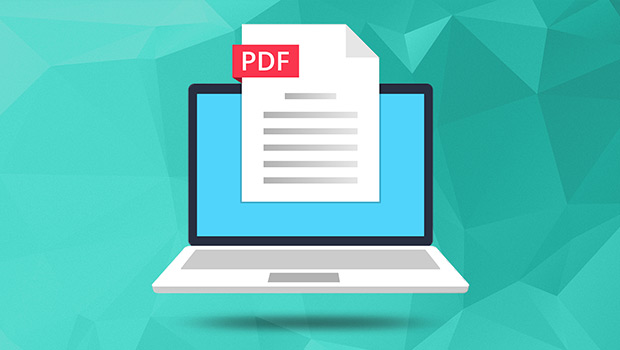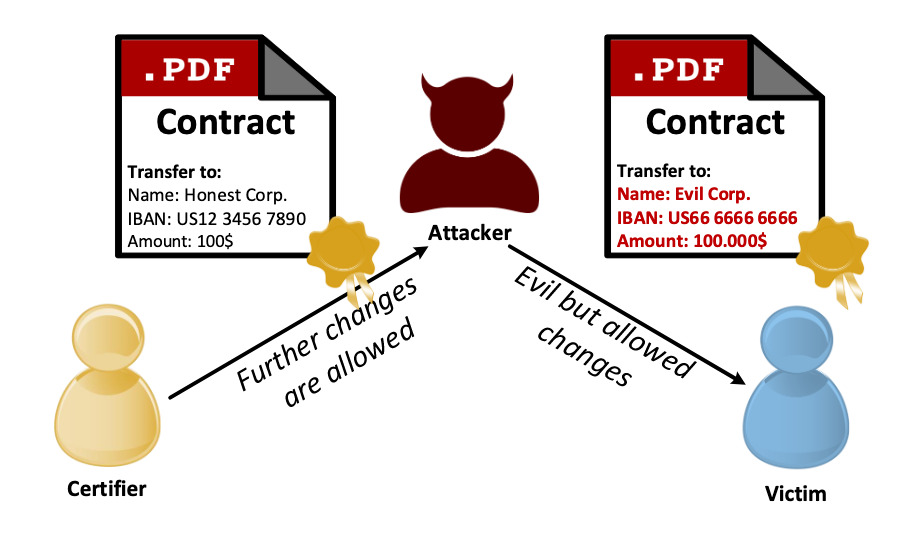- Published on
ZorroSign’s Blockchain-Based Digital Signatures Avoid Security Risks of Adobe PDF Signatures
- Authors
-
-
- Name
- Michael Jones
-

The PDF Problem
Researchers have recently uncovered two major security flaws in certified Adobe PDF applications. These flaws leave organizations that use such PDF signatures exposed to a number of cyberattacks.
“Certified portable document format (PDF) files are used to securely sign agreements between two parties while keeping the contents’ integrity protected,” writes Becky Bracken in a recent Threat Post article. However, researchers from Ruhr-Universität Bochum “found vulnerabilities to two specific novel attacks they dubbed, ‘Evil Annotation’ (EAA) and ‘Sneaky Signature’ (SSA). Both allow an attacker to overlay malicious content (PDF) on top of the certified information without showing any signs it was altered.”
In quick summary, the EAA attack displays “malicious content in the document’s annotations and then sends it on with its digital signature intact. SSAs add malicious content over legitimate content in the PDF itself.”

The original research report further describes “how the attack classes EAA and SSA can be used to inject and execute JavaScript code into certified documents.”

The ThreatPost article concludes that “Certified signatures present a massive, potentially catastrophic, security risk for many organizations and the report urges PDF applications to work quickly to come up with wide-scale fixes.”
The ZorroSign Blockchain Solution
In light of this frightening security gap in Adobe PDF files, ZorroSign is proud to bring an alternative technology to the market for digital signatures. Our platform—built from the ground-up on Hyperledger Fabric blockchain—does not employ the Approval and Certification signatures built into PDFs to authenticate Adobe documents.
Instead, ZorroSign leverages distributed ledger technology (DLT) to securely record documents, workflows, users, and changes to our private, permissioned blockchain. This immutable record preserves chain-of-custody and provenance for agreements, contracts, documents, transactions, and any other digital workflow requiring signatures. And, equally important from a security risk management perspective, prevents any tampering to document annotations or adding content over legitimate content in the digital files themselves.
ZorroSign further deploys our patented 4n6 (“forensics”) token to each and every document—a unique technology seal that captures the chain of custody and an audit trail of the changes made to the document by the parties in the workflow, such as recording key authentication, security and validation information when an action took place.
This summer, ZorroSign will also deploy our new Z-Verify feature. The EAA and the SSA attacks are only possible because the PDF document is verified by itself. With Z-Verify, digital documents are checked against ZorroSign’s private permissioned blockchain record. Hence, the PDFs that are signed using ZorroSign can be cryptographically verified using the Z-Verify platform, preventing the EAA and SSA attack vectors.
Taken together, ZorroSign’s unique security architecture prevents the JavaScript code injection risks in Adobe PDF applications where the Ruhr-Universität report claims “the only requirement is that the victim fully trusts the certificate used to certify the PDF document.”
To learn more about the superior security of ZorroSign digital signatures and how we leverage blockchain technology and our proprietary 4n6 tokens to protect your data, contact us today!